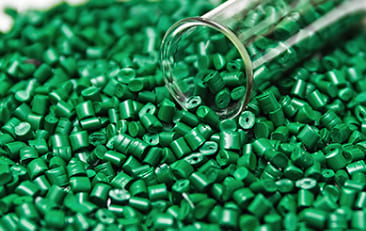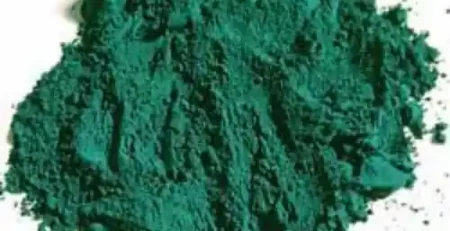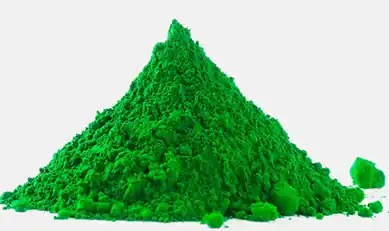What are the Physical property of Bluish Green phthalocyanine Green pigment?
The Mesmerizing Colors of Phthalocyanine Green Pigment
Imagine stepping into an art supply store, surrounded by rows of paints in every color of the rainbow. Your eyes are drawn to a particular shade that catches your attention – a stunning bluish green pigment. You might be wondering, what makes this color so special?
Phthalocyanine Green is a pigment that mesmerizes artists and scientists alike. Its physical properties make it a popular choice for creating beautiful, vibrant shades of green. Let’s dive into the world of Phthalocyanine Green and explore its fascinating characteristics.
1. The Origins of Phthalocyanine Green
Phthalocyanine Green belongs to a family of pigments known as phthalocyanines. These pigments were first discovered in the 19th century but gained popularity in the mid-20th century for their intense color and excellent lightfastness. Phthalocyanine Green, in particular, was developed in the 1930s and has since become one of the most widely used green pigments in the art and industrial world.
2. Vibrant and Versatile
One of the standout features of Phthalocyanine Green is its vibrancy. It possesses a brilliance that captures the eye and stands out in any painting or product. Artists love using it to create lush landscapes and vibrant compositions. Industrial applications also benefit from its intense color, making it a popular choice for products such as plastics, textiles, and coatings.
3. Lightfast and Durable
One important aspect of any pigment is its ability to withstand the test of time. Phthalocyanine Green is known for its exceptional lightfastness, meaning it resists fading and maintains its color even after prolonged exposure to light. This makes it an ideal pigment for outdoor artwork or products that will be exposed to the elements.
4. Chemical Stability
When it comes to pigments, stability is key. Phthalocyanine Green is highly chemically stable, which means it is resistant to reactions with other chemicals or elements. This stability ensures that the color remains true and doesn’t change or degrade over time.
5. Non-Toxic and Environmentally Friendly
In today’s world, it’s important to consider the impact of the products we use on our health and the environment. Phthalocyanine Green is a non-toxic pigment, making it safe for artists, manufacturers, and consumers. Additionally, it is environmentally friendly, as it doesn’t release harmful substances into the air or water.
6. Dispersion and Mixing
Artists often need to mix pigments to achieve specific shades. Phthalocyanine Green excels in the ability to disperse evenly and mix well with other colors. This makes it a versatile pigment for artists who want to experiment and create unique color combinations.
7. Water Solubility
Watercolor enthusiasts will be delighted to know that Phthalocyanine Green is highly soluble in water. This allows artists to easily achieve beautiful transparent washes and layers of color. The pigment also maintains its intensity when dry, ensuring that the artwork remains vibrant and true to the artist’s vision.
8. Heat Stability
Lastly, Phthalocyanine Green exhibits remarkable heat stability. This makes it an excellent choice for industrial applications where heat resistance is required, such as in plastic products or coatings that may be exposed to high temperatures.
Frequently Asked Questions about Phthalocyanine Green Pigment
1. What makes Phthalocyanine Green pigment so vibrant?
The intense vibrancy of Phthalocyanine Green comes from its chemical composition, which allows it to absorb and reflect light in a way that creates a brilliant color.
2. Can Phthalocyanine Green pigment be mixed with other colors?
Absolutely! Phthalocyanine Green mixes well with a wide range of other pigments, allowing artists to create unique and customized shades.
3. Is Phthalocyanine Green pigment safe to use?
Yes, Phthalocyanine Green is non-toxic and safe for use in artistic and industrial applications. It meets stringent safety standards and does not pose a threat to health or the environment.
4. Does Phthalocyanine Green pigment fade over time?
No, Phthalocyanine Green is known for its exceptional lightfastness, meaning it resists fading even after prolonged exposure to light.
5. Can Phthalocyanine Green pigment be used in watercolor painting?
Absolutely! Phthalocyanine Green is highly soluble in water, making it an excellent choice for watercolor artists who want to achieve vibrant, transparent washes of color.
In conclusion, Phthalocyanine Green is a truly remarkable pigment. Its vibrant color, excellent lightfastness, chemical stability, and non-toxic nature have made it a favorite among artists and industries alike. Whether you’re painting a masterpiece or manufacturing a product, Phthalocyanine Green is a reliable choice that will bring your creations to life with its mesmerizing bluish green hue.
As French painter Claude Monet once said, “Color is my day-long obsession, joy, and torment.” Let Phthalocyanine Green be your source of joy as you explore the fascinating world of color and creativity. So go ahead, unleash your imagination, and paint the world green!
And remember, at Gajanan Organics, we strive to provide you with the highest quality pigments, including Phthalocyanine Green, that will inspire your artistic journey. Happy painting!
Quote: “The world is but a canvas to our imagination.” – Henry David Thoreau








